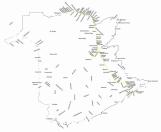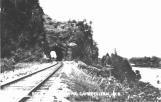1
The Intercolonial Railway was created to help bond the Canadian Colonies together into a country by creating a railway that would link the colonies to each other. Building the Intercolonial Railway through the Maritimes would also permit manufacturers in Central Canada to ship goods year round through the ice free ports of the Maritimes. In 1848 Major Robinson tracked through the woods of Northeastern New Brunswick surveying several possible routes. The Colonial office (appointed by the British Parliament) chose the most eastern route possible through New Brunswick so that there would be little danger that the line would fall into American hands if another war with the United States broke out. Another key reason for choosing this route was to provide access to a rail line for residents in eastern Quebec and along the lower part of the St. Lawrence. However, the estimated cost of one million British pounds to build the route was considered too high by the British Parliament and the project did not proceed. While the colonial office delayed New Brunswickers focused on building lines such as the European and North American Railway which connected them with their traditional trading partners in the United States. The American Civil War of 1861-65 once again had politicians looking to construct a national railway through Canada. The line would ensure the continued free movement of Canadian goods by allowing Canadian companies to avoid sending goods through the unstable United States. At the same time, markets for goods from the Maritimes suffered from the increase in American import tariffs. As negotiations for union of the Canadian colonies started the construction of a National Railway was a key part of the talks. Construction of the Intercolonial Railway line through New Brunswick was carried out under the direction of Sanford Fleming. The line from Painsec Jct. to the Nova Scotia border was completed in 1871. This crooked part of the line ran through the communities of Memramcook and Dorchester rather than going directly through the woods to the border. This was done so that Dorchester and the other communities would have access to the line. Completion of this section of the line to Truro, Nova Scotia in 1872 allowed trains to travel from Halifax to Saint John, along the European and North American Railway line. This line had become part of the Intercolonial line in 1869. The line from Moncton to Campbellton was finished in 1875. Unlike the line from Painsec Jct. to Sackville this section of the line was constructed with few changes made to the original survey route. Thus the line traveled straight through wooded areas avoiding the communities along the eastern coast of the province. The entire Quebec to Halifax line cost $36 million and was opened on July 6th, 1876. Moncton was chosen as headquarters for the Intercolonial Railway. Railway shops were built and by the twentieth century thousands of people were employed for the railway. Moncton was now firmly established as the main point of or hub of rail activity in the Maritimes, hence the nickname the "Hub City". Since American policies prevented military troops and equipment from crossing over American tracks during World War One and World War Two, that meant that all such military goods were required to move over the all Canadian Intercolonial Railway. By 1919 the Canadian Government Railways had taken over control of 9 branch lines in the Province. They were the Fredericton and St. Mary's Bridge Company, the Canada Eastern Railway, the International Railway, the New Brunswick and Prince Edward Island Railway, the Salisbury and Harvey Railway, the Elgin and Havelock Railway, the St. Martins Railway, the Moncton and Buctouche Railway, and the York and Carleton Railway.By 1915 there were too many railways serving the same small under-populated areas of Western Canada. Although these areas were growing rapidly there was not enough traffic to sustain three transcontinental lines at the same. The large debt of one of these lines the National Transcontinental Railway ensured that it would never turn a profit. So the federal government decided in 1915 to make both the Intercolonial Railway and the National Transcontinental Railway part of the Canadian Government Railways. Following the collapse in 1917 of another of the transcontinental lines the Canadian Northern Railway, this line as well as several other smaller spur lines that the government had bailed out merged with the Canadian Government Railways to become the Canadian National Railways.
3
Canadian Government Railway lines20th Century
New Brunswick, Canada
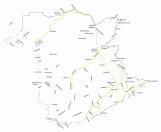 Credits:
Credits:New Brunswick Railway Museum
4
City of Moncton railway lines19th Century
Moncton, New Brunswick, Canada
 Credits:
Credits:New Brunswick Railway Museum
5
Campbellton Station20th Century, Circa 1905
Campbellton, New Brunswick, Canada
 Credits:
Credits:New Brunswick Railway Museum
6
ICR Moncton Offices20th Century, Circa 1910
Moncton, New Brunswick, Canada
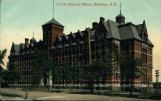 Credits:
Credits:New Brunswick Railway Museum
7
ICR Moncton Offices20th Century, Circa 1930
Moncton, New Brunswick, Canada
 Credits:
Credits:New Brunswick Railway Museum
8
Moncton ICR Station20th Century, Circa 1909
Moncton, New Brunswick, Canada
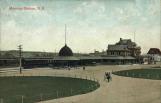 Credits:
Credits:New Brunswick Railway Museum
9
Moncton ICR Station20th Century, Circa 1915
Moncton, New Brunswick, Canada
 Credits:
Credits:New Brunswick Railway Museum
11
Campbellton Station20th Century, Circa 1915
Campbellton, New Brunswick, Canada
 Credits:
Credits:New Brunswick Railway Museum
12
Campbellton INR Station20th Century, Circa 1910
Campbellton, New Brunswick, Canada
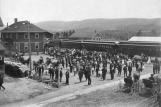 Credits:
Credits:New Brunswick Railway Museum
13
Moncton ICR Shops20th Century, Circa 1912
Moncton, New Brunswick, Canada
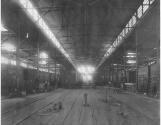 Credits:
Credits:New Brunswick Railway Museum
14
Moncton ICR Shops20th Century, Circa 1910
Moncton, New Brunswick, Canada
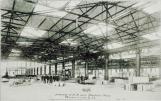 Credits:
Credits:New Brunswick Railway Museum
